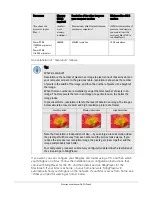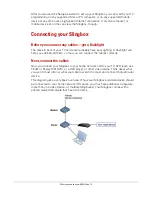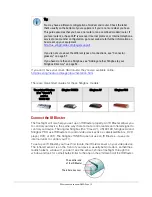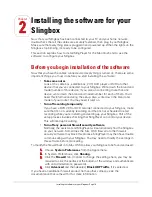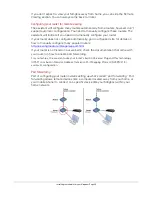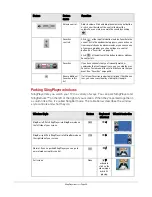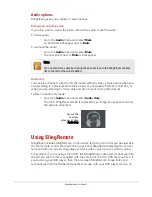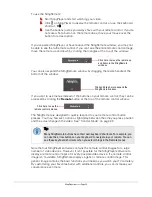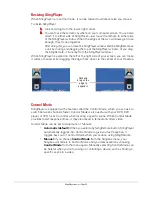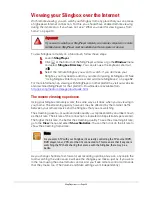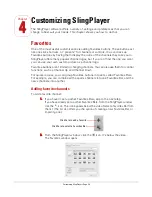
Installing the software for your Slingbox • Page 21
When you are ready, click
Continue
and follow the onscreen instructions.
Soon, you see the
Connection to Your Slingbox
window.
Your Slingbox shares your TV’s video source, usually using one of the three methods
displayed in this window:
What appears on your screen may be different, depending on the connections
available on your Slingbox.
Click in the window to select the type of connection that your television uses, then
click
Continue
(For more information about cables and connections, see the
Connector glossary on page 57.).
.
Connection
Description
RF/Coaxial Cable.
If you have cable service or your own TV antenna, usually you’ll
connect using coaxial cable (sometimes called just “coax”). Coaxial cable is easy to
spot: it has a highly-visible center wire protruding from each end, and almost always
has threaded caps at each end as well.
Composite.
If you use a TiVo, or some satellite TV services, your TV probably gets its
signals via “composite” cabling that consists of three separate cables, one cable
with a red connector, one with a white connector, and one with a yellow connector.
All you have to do to connect composite cable wiring is press the connections firmly
in place.
S-video.
Costlier video equipment often uses this kind of cabling.
S-video cables have multi-pin connectors. Since they carry no sound, they are used
in conjunction with red and white audio cables, as shown (The diagram shows a
composite cable being used with S-video. The yellow connector is not used).
S-video



